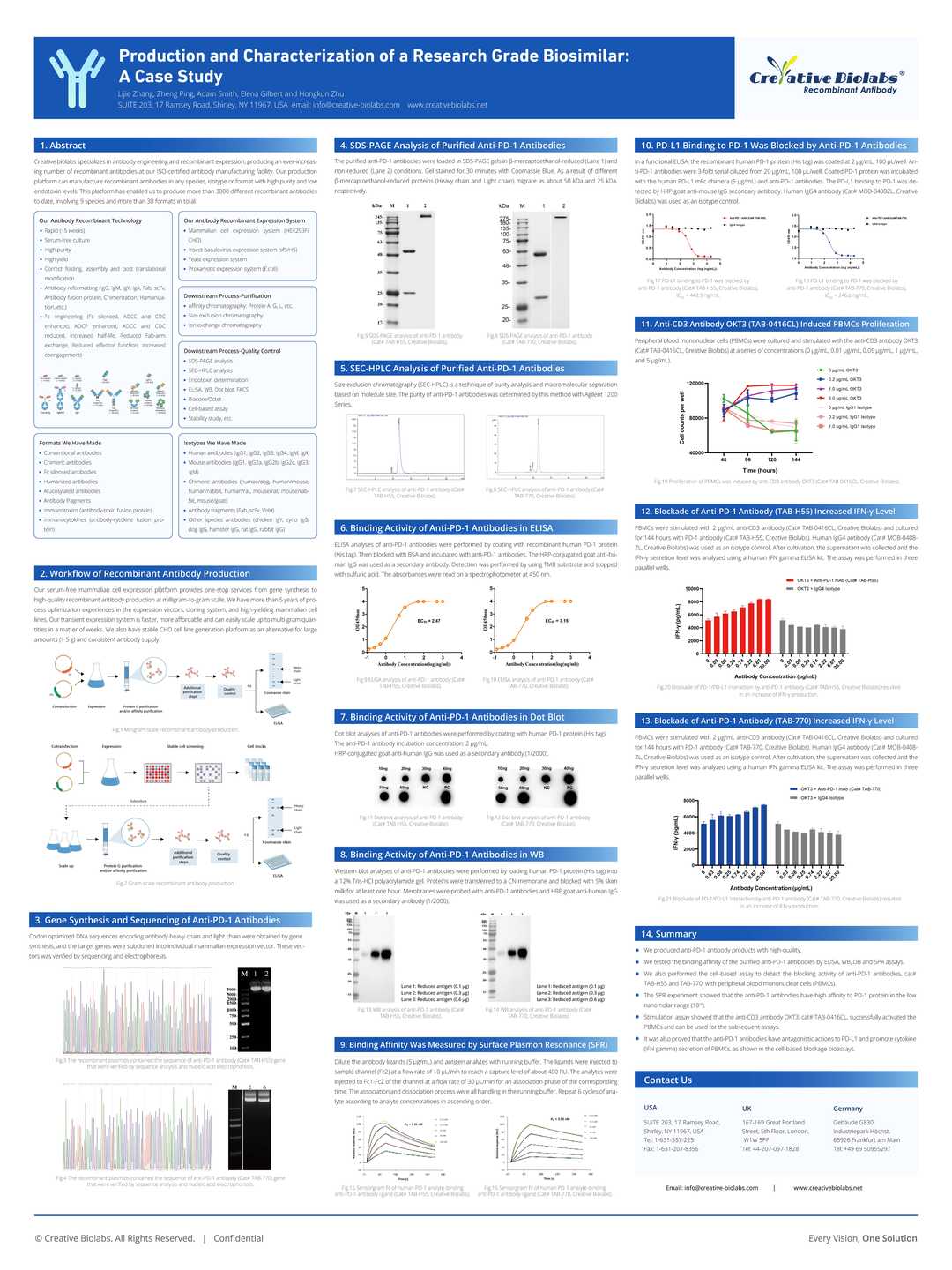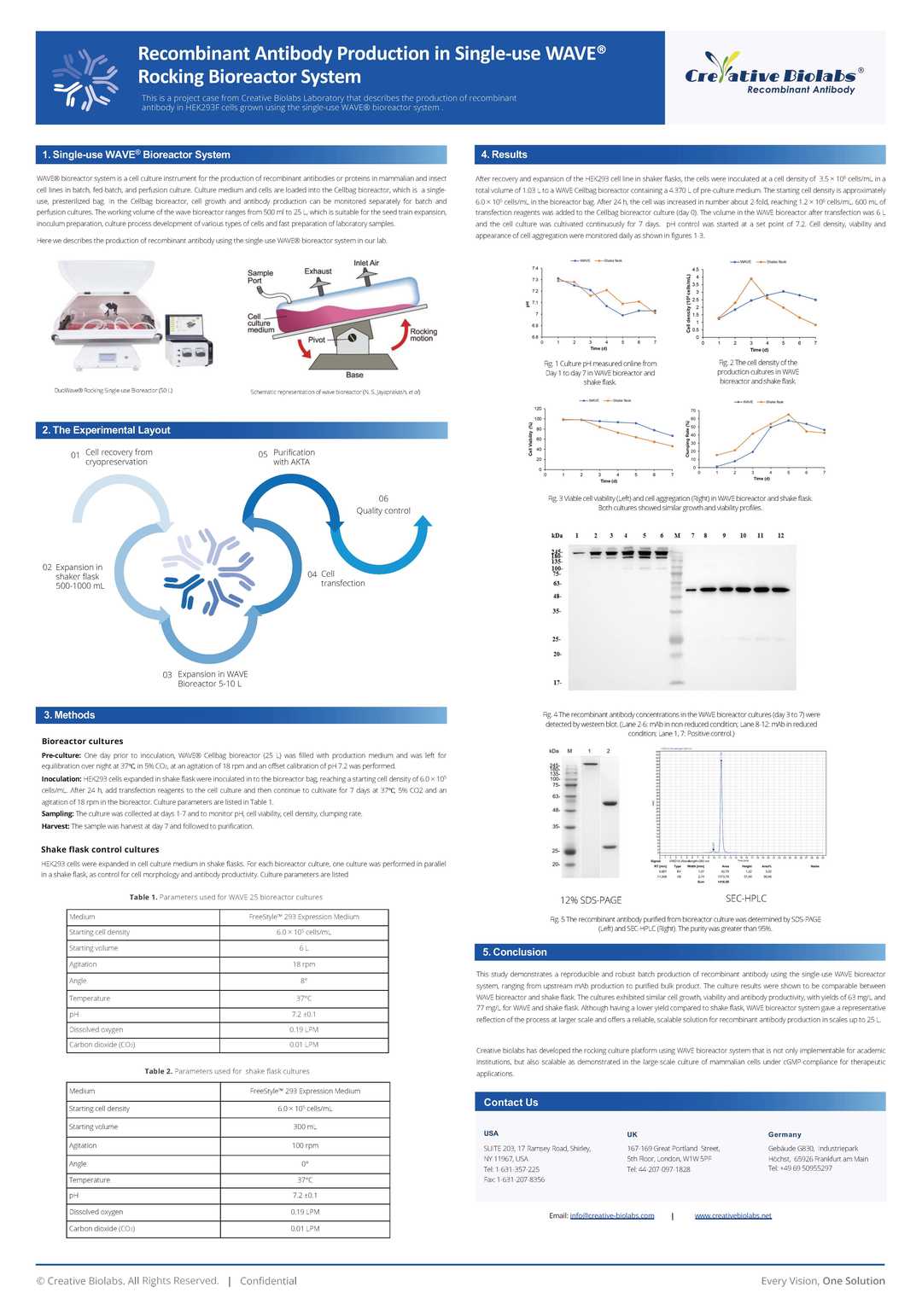Mouse Anti-PRKCA Recombinant Antibody (VS3-CJ90)
CAT#: VS3-CJ90
This product is a mouse antibody that recognizes PRKCA.
Specifications
- Immunogen
- Recombinant fragment of human PRKCA (C-terminus)
- Host Species
- Mouse
- Type
- Mouse IgG
- Specificity
- Human PRKCA
- Species Reactivity
- Human
- Applications
- WB, ELISA
- Conjugate
- Unconjugated
Product Property
- Purification
- Protein G affinity purified
- Purity
- >95% as determined by SDS-PAGE
- Format
- Liquid
- Concentration
- 1 mg/mL (lot specific)
- Buffer
- 50% Glycerol, 1% BSA, PBS, pH7.4.
- Preservative
- 0.02% sodium azide
- Storage
- Store at 4°C for short term. Aliquot and store at -20°C for long term. Avoid repeated freeze/thaw cycles.
- Shipping
- Ice packs
Applications
- Application Notes
- This antibody has been tested for use in ELISA (1:5000-1:20000), Western Blot (1:100-1:2000).
Target
- Alternative Names
- AAG6; PKC-alpha; PKCA; PKCI+/-; PKCalpha; PRKACA
- Gene ID
- 5578
- UniProt ID
- P17252
- Sequence Similarities
- Belongs to the protein kinase superfamily. AGC Ser/Thr protein kinase family. PKC subfamily.
- Cellular Localization
- Cell membrane, Cytoplasm, Membrane, Mitochondrion, Nucleus
- Protein Refseq
- NP_002728.1
- Function
- Calcium-activated, phospholipid- and diacylglycerol (DAG)-dependent serine/threonine-protein kinase that is involved in positive and negative regulation of cell proliferation, apoptosis, differentiation, migration and adhesion, tumorigenesis, cardiac hypertrophy, angiogenesis, platelet function and inflammation, by directly phosphorylating targets such as RAF1, BCL2, CSPG4, TNNT2/CTNT, or activating signaling cascade involving MAPK1/3 (ERK1/2) and RAP1GAP. Involved in cell proliferation and cell growth arrest by positive and negative regulation of the cell cycle. Can promote cell growth by phosphorylating and activating RAF1, which mediates the activation of the MAPK/ERK signaling cascade, and/or by up-regulating CDKN1A, which facilitates active cyclin-dependent kinase (CDK) complex formation in glioma cells. In intestinal cells stimulated by the phorbol ester PMA, can trigger a cell cycle arrest program which is associated with the accumulation of the hyper-phosphorylated growth-suppressive form of RB1 and induction of the CDK inhibitors CDKN1A and CDKN1B. Exhibits anti-apoptotic function in glioma cells and protects them from apoptosis by suppressing the p53/TP53-mediated activation of IGFBP3, and in leukemia cells mediates anti-apoptotic action by phosphorylating BCL2. During macrophage differentiation induced by macrophage colony-stimulating factor (CSF1), is translocated to the nucleus and is associated with macrophage development. After wounding, translocates from focal contacts to lamellipodia and participates in the modulation of desmosomal adhesion. Plays a role in cell motility by phosphorylating CSPG4, which induces association of CSPG4 with extensive lamellipodia at the cell periphery and polarization of the cell accompanied by increases in cell motility. During chemokine-induced CD4+ T cell migration, phosphorylates CDC42-guanine exchange factor DOCK8 resulting in its dissociation from LRCH1 and the activation of GTPase CDC42 (PubMed:28028151).
Is highly expressed in a number of cancer cells where it can act as a tumor promoter and is implicated in malignant phenotypes of several tumors such as gliomas and breast cancers. Negatively regulates myocardial contractility and positively regulates angiogenesis, platelet aggregation and thrombus formation in arteries. Mediates hypertrophic growth of neonatal cardiomyocytes, in part through a MAPK1/3 (ERK1/2)-dependent signaling pathway, and upon PMA treatment, is required to induce cardiomyocyte hypertrophy up to heart failure and death, by increasing protein synthesis, protein-DNA ratio and cell surface area. Regulates cardiomyocyte function by phosphorylating cardiac troponin T (TNNT2/CTNT), which induces significant reduction in actomyosin ATPase activity, myofilament calcium sensitivity and myocardial contractility. In angiogenesis, is required for full endothelial cell migration, adhesion to vitronectin (VTN), and vascular endothelial growth factor A (VEGFA)-dependent regulation of kinase activation and vascular tube formation. Involved in the stabilization of VEGFA mRNA at post-transcriptional level and mediates VEGFA-induced cell proliferation. In the regulation of calcium-induced platelet aggregation, mediates signals from the CD36/GP4 receptor for granule release, and activates the integrin heterodimer ITGA2B-ITGB3 through the RAP1GAP pathway for adhesion. During response to lipopolysaccharides (LPS), may regulate selective LPS-induced macrophage functions involved in host defense and inflammation. But in some inflammatory responses, may negatively regulate NF-kappa-B-induced genes, through IL1A-dependent induction of NF-kappa-B inhibitor alpha (NFKBIA/IKBA). Upon stimulation with 12-O-tetradecanoylphorbol-13-acetate (TPA), phosphorylates EIF4G1, which modulates EIF4G1 binding to MKNK1 and may be involved in the regulation of EIF4E phosphorylation. Phosphorylates KIT, leading to inhibition of KIT activity. Phosphorylates ATF2 which promotes cooperation between ATF2 and JUN, activating transcription. Phosphorylates SOCS2 at 'Ser-52' facilitating its ubiquitination and proteosomal degradation (By similarity).
Customer Review
There are currently no Customer reviews or questions for VS3-CJ90. Click the button above to contact us or submit your feedback about this product.
Submit Your Publication
Published with our product? Submit your paper and receive a 10% discount on your next order! Share your research to earn exclusive rewards.
Downloadable Resources
Download resources about recombinant antibody development and antibody engineering to boost your research.
Product Notes
This is a product of Creative Biolabs' Hi-Affi™ recombinant antibody portfolio, which has several benefits including:
• Increased sensitivity
• Confirmed specificity
• High repeatability
• Excellent batch-to-batch consistency
• Sustainable supply
• Animal-free production
See more details about Hi-Affi™ recombinant antibody benefits.
Datasheet
MSDS
COA
Certificate of Analysis LookupTo download a Certificate of Analysis, please enter a lot number in the search box below. Note: Certificate of Analysis not available for kit components.
Isotype Control
- CAT
- Product Name
Secondary Antibody
- CAT
- Product Name
Recommended Dilution Buffer
- CAT
- Product Name
See other products for "PRKCA"
Select a product category from the dropdown menu below to view related products.
| CAT | Product Name | Application | Type |
|---|---|---|---|
| MOB-1607CT | Recombinant Mouse anti-Human PRKCA Monoclonal antibody (EML1606) | ICC, IF, IHC-P, WB | |
| MRO-2358-CN | Recombinant Rabbit Anti-PRKCA (phosphorylated Thr638) Monoclonal Antibody (JF0964) | WB, IF, IHC, IP | Rabbit IgG |
| ZG-0333U | Rabbit Anti-PRKCA Recombinant Antibody (clone G13-R) | ELISA, WB, IP, ICC | Rabbit IgG |
| ZG-0412U | Rabbit Anti-PRKCA Recombinant Antibody (clone D22-G), FITC | FC | Rabbit IgG |
| VS3-WK2037 | Rabbit Anti-PRKCA (pS657) Recombinant Antibody (clone R05-8I3) | WB, IHC-P | Rabbit IgG |
| CAT | Product Name | Application | Type |
|---|---|---|---|
| MOR-2853 | Hi-Affi™ Recombinant Rabbit Anti-PRKCA Monoclonal Antibody (DS2853AB) | WB, IP, IHC-P, ICC, IF | IgG |
| CAT | Product Name | Application | Type |
|---|---|---|---|
| VS-0424-XY216 | AbPlus™ Anti-PRKCA Magnetic Beads (CBACN-450) | IP, Protein Purification |
| CAT | Product Name | Application | Type |
|---|---|---|---|
| VS-1024-XY390 | Mouse Anti-NHP PRKCA Recombinant Antibody (clone MC5) | WB, IHC, IF, IP | Mouse IgG2a |
| CAT | Product Name | Application | Type |
|---|---|---|---|
| VS13-YC935 | CytoStream™ Rabbit Anti-PRKCA Recombinant Antibody (VS13-YC935) | WB, ICC, IF, IHC-P, FC, IP | Rabbit IgG |
Popular Products

Application: WB, FuncS, IF, Neut, ELISA, FC, IP

Application: ELISA, IP, FC, FuncS, Neut, IF, ICC

Application: ELISA, Inhib, FC

Application: ELISA, FC, WB, Block

Application: WB, ELISA, IF

Application: FC, ADCC, CDC, Inhib

Application: FC, FRET, Internalization

Application: ELISA, IHC, FC, IP, IF, Inhib

Application: WB, ELISA, FC, IHC, IF, IP

Application: FC, IA, IF, IP, IHC, FuncS

Application: ELISA, WB

Application: ELISA, FC, FuncS
For research use only. Not intended for any clinical use. No products from Creative Biolabs may be resold, modified for resale or used to manufacture commercial products without prior written approval from Creative Biolabs.
This site is protected by reCAPTCHA and the Google Privacy Policy and Terms of Service apply.















